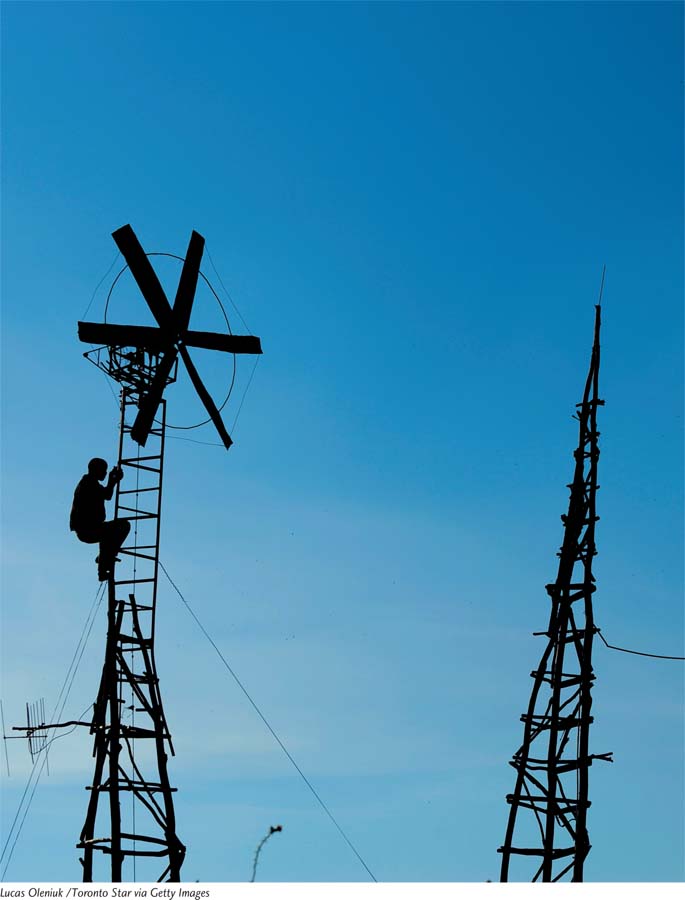Chapter Introduction
chapter 13
Achieving Energy Sustainability
430

431
Module 37 Conservation, Efficiency, and Renewable Energy
Module 38 Biomass and Water
Module 39 Solar, Wind, Geothermal, and Hydrogen
Module 40 Planning Our Energy Future
Energy from the Wind
Although William had never seen a windmill, within months he was building his own from abandoned bicycles and old parts he found in scrap heaps.
In a small village in the African nation of Malawi, a 14-
432
The use of windmills, also known as wind turbines, to generate electricity is growing in both the developing and developed worlds. The mechanics of how to build a windmill are widely discussed in online sources including YouTube, Wikipedia, and “how to build it” instructional videos. A few years after he built his first windmill with the help of only one book, and after learning about the vast resources available over the Internet that he did not have access to previously, William exclaimed to Jon Stewart on The Daily Show, “Where was this Internet when I needed it?” William recently graduated from Dartmouth College, where he majored in environmental studies, and has cowritten a book, The Boy Who Harnessed the Wind. It has sold thousands of copies and has been adopted as summer reading in high schools and colleges around the United States and elsewhere in the world.
Sources:W. Kamkwamba and B. Mealer, The Boy Who Harnessed the Wind (Harper, 2009); R. Wolfson, Energy, Environment and Climate, 2nd ed. (Norton, 2012).
Throughout this book we have discussed sustainability as the foundation of the environmental health of our planet. Sustainability is particularly important to consider with respect to energy because energy is a resource humans cannot live without and energy use often has many consequences for the environment. Currently, only a very small fraction of the energy we use, particularly in the developed world, comes from renewable resources. While developing renewable energy resources is an important step, achieving energy sustainability will require us to rely as much, or more, on reducing the amount of energy that we use.
In Chapter 12 we discussed the finite nature of traditional energy resources such as fossil fuels and the environmental consequences of their use. In this chapter we outline the components of a sustainable energy strategy, beginning with ways to reduce our use of energy through conservation and increased efficiency. We define renewable forms of energy and discuss an important carbon-